During the past 60 years' development after the peaceful liberation of Tibet Autonomous Region, Tibet's GDP soared 111.8times from 1951 to 2010, an average annual growth of 8.3 percent.
Central Government's assistance includes 300 billion yuan in financial subsidies, 160 billion yuan in direct investment, 4,393 projects, with a total of 13.3billion yuan in funds and 4,742 cadres from across the country dispatched to work in Tibet under the partnership assistance program in which state departments, provincial and municipal governments, and state-owned enterprises participated.
Economic Growth
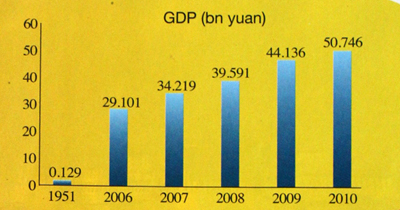
Tibet's GDP soared 111.8times from 1951 to 2010, an average annual growth of 8.3 percent.[Photo/Beijing Review]
Fix-asset investment
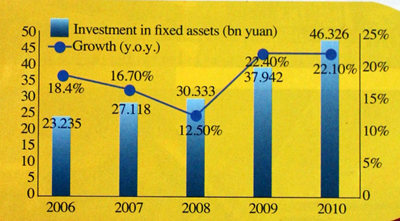
From 1959 to 2010, fixed-asset investment in Tibet totaled 275.1 billion yuan, registering an average annual growth of over 15 percent.[Photo/Beijing Review]
Industrial development
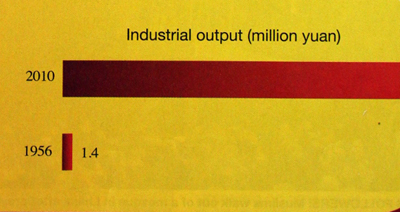
The total industrial output value registered an annual growth rate of 14.1 percent from 1956 to 2010.[Photo/Beijing Review]
Foreign trade

The total value of imports and exports reached $835.94 million in 2010.[Photo/Beijing Review]
Housing
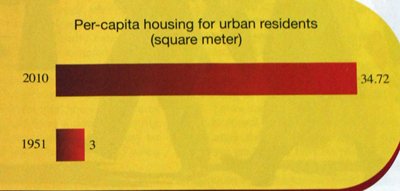
Before 1951, more than 90 percent of the people in Tibet had no private housing. Over the past 60 years the Tibetan people's living conditions have constantly improved.[Photo/Beijing Review]
Transportation

All townships and more than 80 percent of the administrative villages in Tibet have gained access to highways.[Photo/Beijing Review]
Education
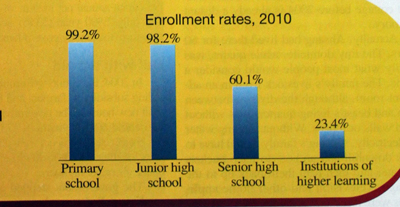
Before 1951, the enrollment rate for school-age children was less than 2 percent, while the illiteracy rate was as high as 95 percent among the young and the middle aged. Now the illiteracy rate among young people and the middle-aged has fallen to 1.2 percent. [Photo/Beijing Review]
